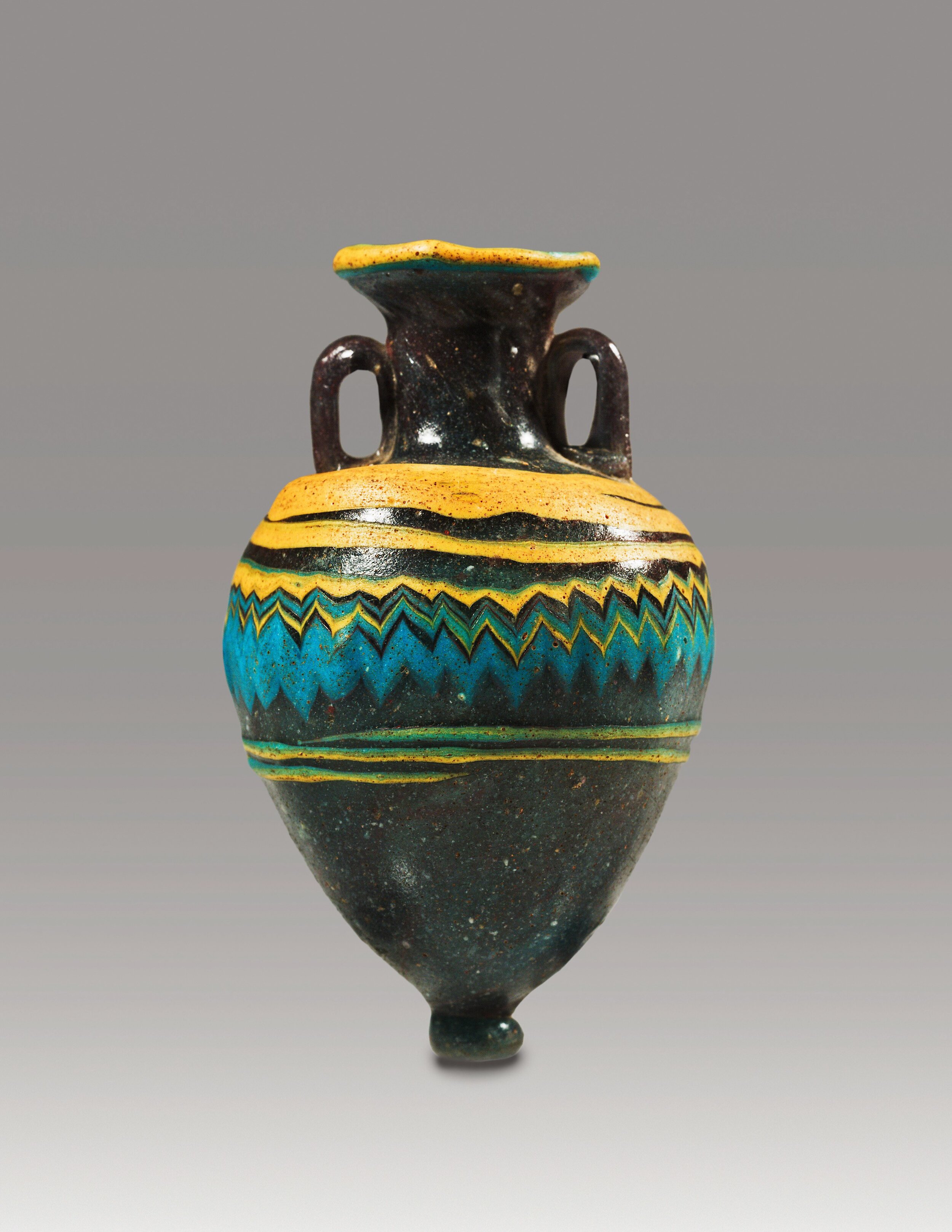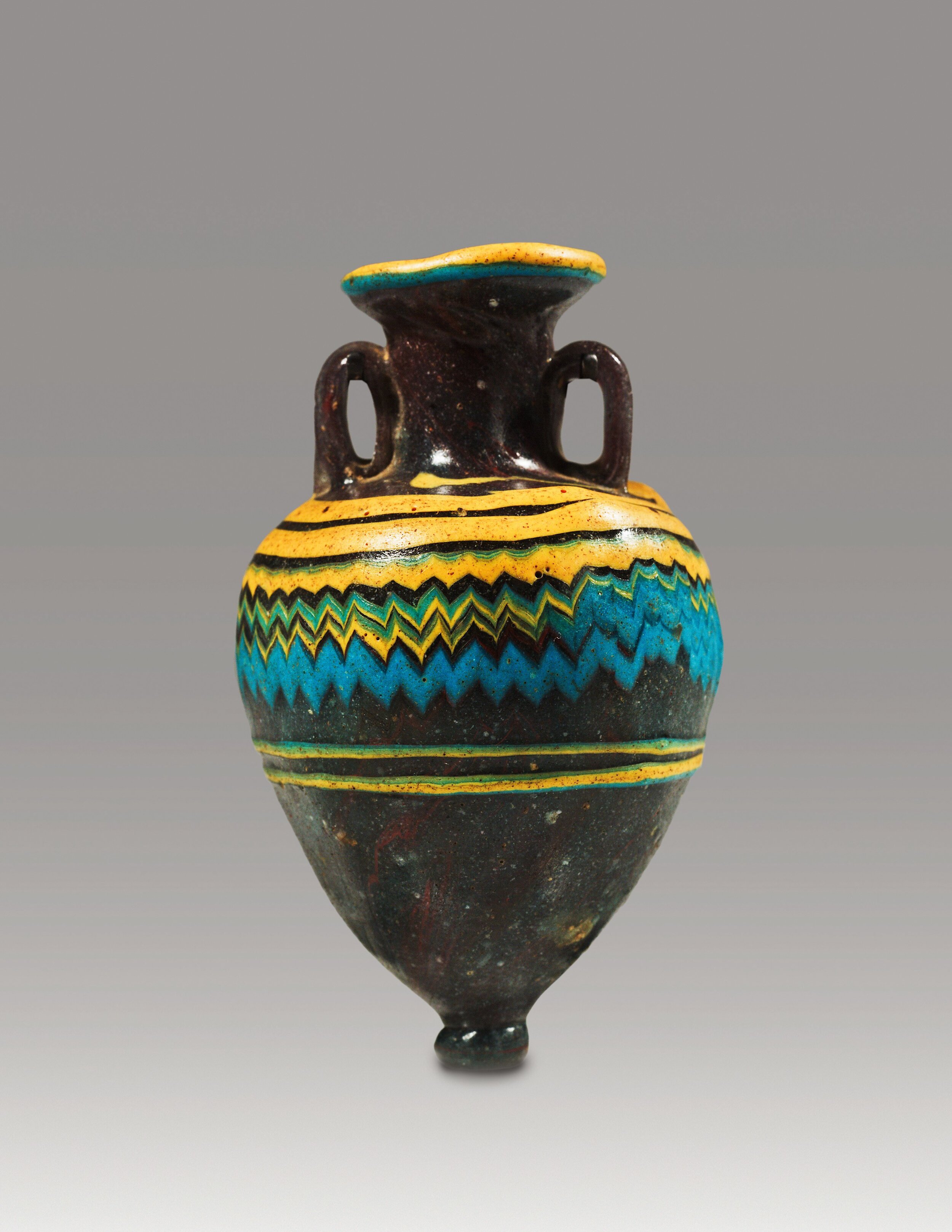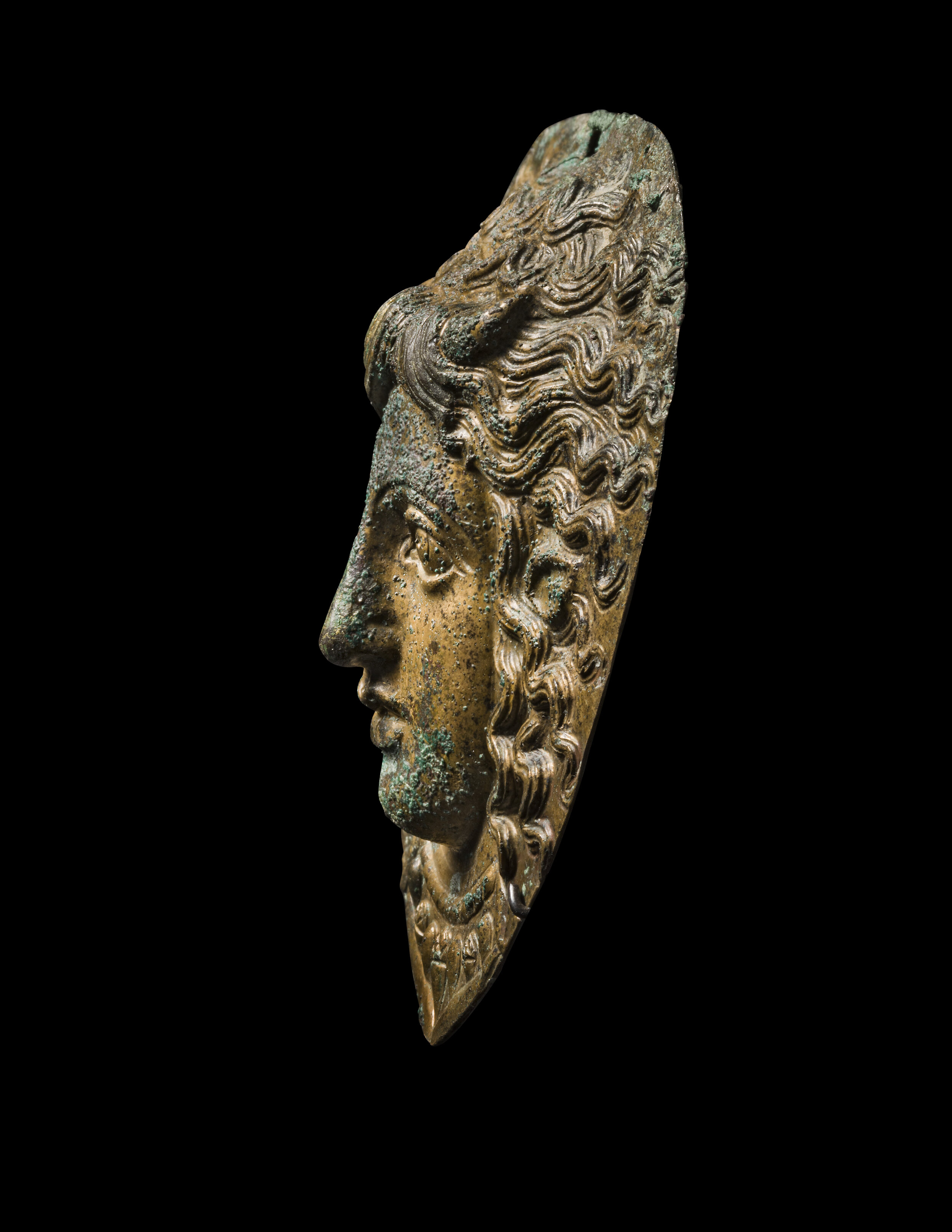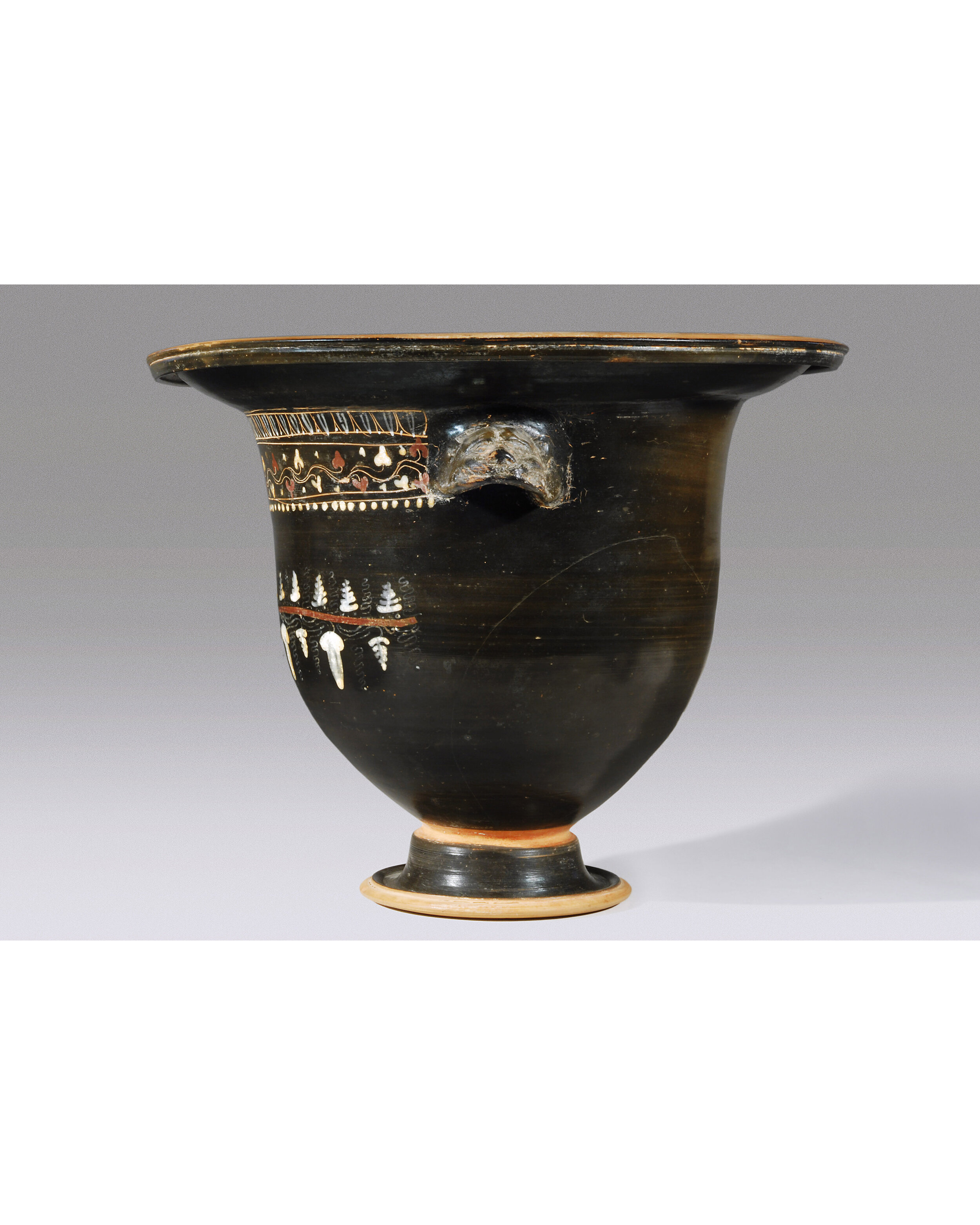Ancient Classical Greek Bronze Oinochoe





Ancient Classical Greek Bronze Oinochoe
Greek, Classical, 5th century B.C.
Bronze
H: 21.5 cm, D: 17 cm
PROVENANCE: Ex- European private collection, 1999
SERIAL NO: 9494
The oinochoe, used a container for wine, is well-preserved with a green patina and only a few areas missing from the body of the vessel at the side and foot. The shape of this oinochoe is particularly distinctive, with the edge of its lip embellished in a reed design, a narrow neck that curves gracefully down to sloping shoulders, and a rounded body offset with a subtle indentation below, which defines the foot. The oinochoe’s wide body and broad, flat base served to provide the vessel with a low center of gravity and stable footing if placed on an uneven surface.
The reeded handle of the vessel extends upward from the lip in an elegant curve and terminates on the broad side of the body in a roundel decorated with the face of a gorgon. According to Greek myth, these monsters – the sisters Medusa, Sthenno, and Euryale – with their prominent fangs, extended tongues, snake-like hair, and overall horrific appearance, were capable of turning anyone who looked upon them into stone. As such, gorgons became popular as apotropaic beings capable of warding off evil with their threatening grimace. Images of gorgons were utilized in this way from the Archaic period onward and decorated temples, grave monuments, and even smaller objects made of ceramic or bronze. Perseus, with the assistance of the goddess Athena, Hermes, and the nymphs – who supplied him with winged sandals, Hades’ “cap of invisibility,” and a sickle – beheaded the gorgon Medusa as she slept and thus transformed her monstrous head into a protective and decorative device. Medusa’s head notably adorned the center of the protective aegis belonging to Athena and later, in the Roman period, the cuirass of the imperial breastplate worn by the emperors. Emblazoned on the side of this oinochoe, the gorgon face appears to be a simple decoration, but it likely also functioned as a protector of both the good wine that the vessel contained and those individuals who drank the beverage.
Utilitarian vessels for the serving of wine, like this Greek oinochoe, were popular in the classical world beginning in the early Geometric period. Oinochoai were used to transfer wine from the large krater (mixing bowl) because wine in antiquity, due to its high alcohol content, was usually mixed with water in a krater to create a less powerful beverage. The general shape of the vessel continued for centuries and well into the Hellenistic and Roman periods. Made of relatively expensive bronze, rather than ceramic, metal jugs like this example were probably part of the tableware owned by wealthy or aristocratic individuals. For a similar oinochoe with the handle terminating in a palmette as a decorative device, see the example in the Metropolitan Museum of Art, New York (acc. no. 1981.62, ex Norbert Schimmel Collection, in The Metropolitan Museum of Art Bulletin, vol. 49, no. 4 (1992), 60, no. 58). Another oinochoe, with the stylized image of a panther head decorating the handle terminus, is in the collection of the Bibliothèque Nationale, Paris (acc. no. 1373, in A. Adam, Bronzes Etrusques et Italiotes (Paris 1984), no. 1).









